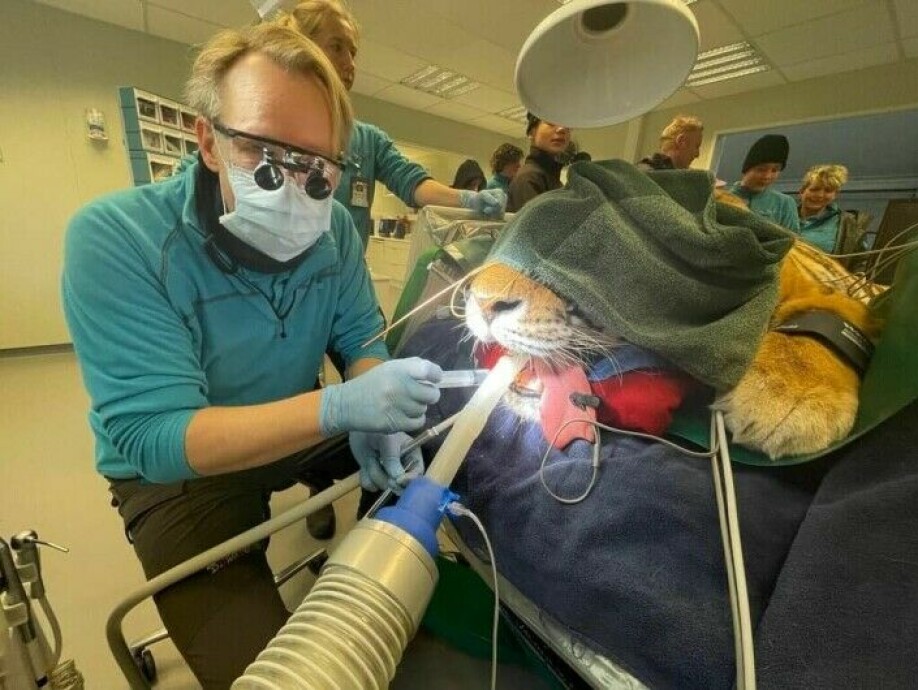
Why didn't our ancient ancestors get cavities?
ASK A RESEARCHER: People used to not have cavities. So why do we get them today?
We can blame the agricultural revolution for accelerating tooth decay in humans – if we are to believe an article by three German researchers in the journal PLOS One.
“Caries is a common oral disease in humans, and has been for about 10 000 years. The disease is linked to the shift from hunters and gatherers to farmers. Until the late Palaeolithic period, modern humans rarely had caries,” the German researchers write in their article from 2018.
When humans went from hunting and gathering to farming, we started eating completely different foods.
That shift would come to be significant for humanity's teeth, but only in recent centuries have we noticed its full impact.
Caries death 350 000 years ago
Torfinn Ørmen, a zoologist and senior lecturer at OsloMet, offers an example of people in the even more distant past who also had caries.
He points to a study on a skull from a Homo rhodesiensis man who lived 350 000 years ago. He was closely related to our ancestors in Africa, says the zoologist.
The skull was found in Zambia in 1921, and his teeth were not in good condition. More precisely, they were pretty rotten.
Blood poisoning likely
He probably didn’t pick between his teeth to remove food debris. Another theory is that he ate a lot of honey.
“The guy probably died of blood poisoning,” says Ørmen.
This can happen in extreme cases if bacteria from the teeth spread to the bloodstream. Perhaps the prehistoric man had great access to honey.
“Or he could have had a genetic defect that caused him to have very bad teeth.”
Researchers cannot say for sure.
“We have very few teeth from this period in Africa. We don’t know if this is unusual or not,” says Ørmen.

Uric acid to our detriment
Through evolution, the great apes, like us humans, have acquired a rather useful trait, which admittedly brings with it certain challenges in a society of abundance.
Ørmen explains that all great apes lack uricase – an enzyme that breaks down uric acid in the body.
“It was a useful trait to have. When the apes no longer broke down uric acid, they got fatter when they ate a lot of fruit,” he says.
Ørmen says that the trait was probably a mutation or an adaptation that arose in some ancestor of the great apes that exist today.
The mutation caused the great apes to gorge themselves and build up their fat stores whenever the supply was available.
“This strategy worked well when fruit was available for only a small part of the year. Now sugar is available in quantity 365 days a year. That’s when things can go wrong.”
For our teeth, we’d probably do better having a couple of months with no access to sugar.
“We should eat berries and fruit and such in late summer and fall – and then not for the rest of the year,” Ørmen says.
Trouble with the agricultural revolution?
The Neolithic Revolution occurred about 10 000 years ago. It was the first agricultural revolution and took place in the Fertile Crescent.
This area includes parts of present-day Iraq, Syria, Lebanon, Palestine, Israel, Jordan, Egypt, Turkey and Iran.
The agricultural revolution led to an explosion in the human population. It also brought other things with it.
An agricultural society “might be able to feed an entire population, but the food will be very one-sided,” says Ørmen.
He explains that hunters and gatherers ate everything between heaven and earth. They were super healthy.
“They had access to all the vitamins and minerals they needed.”
The reality was a little different for the farmers, who mostly ate only what they grew. And being a farmer was a hard life.
“Farmers suffered physical wear and tear from kneeling and weeding. And they had access to a lot of sugar. People began to eat foods that were less beneficial for their health,” says Ørmen.
Although the food became less nourishing and caries probably increased in prevalence, evidence suggests that the extent of poor dental health did not become so dire until much more recent times.
It took a long time before sugar became available to everyone – especially in the far north.
A new phenomenon
Ørmen has studied the Medieval Park in Oslo – and people who lived about 1 000 years ago – where well-preserved remains have been found.
“People then had perfect teeth. They were worn down but had no cavities. There weren’t a lot of sweets in Norway at that time. They might have had access to honey, fruit and berries, but refined sugar wasn’t available,” he says.
The traces we have indicate that very few people had serious tooth decay.
“Cavities weren’t at all common. They’re a new phenomenon – we’re talking about the last few hundred years. Tooth decay started with the upper class, since they were the first to have access to sugar and sweets,” Ørmen says.
History has it that Queen Elizabeth I had a penchant for marzipan and other sweets. And it is said that this craving was hard on her teeth at a time when sweets were inaccessible to most people – so hard that her teeth reportedly turned black as a result of rot.

What about the animals?
Most people have adapted to a way of life – and a diet – that is a far cry from our original one. We can clearly observe this in human’s dental health, but what about animals and their choppers?
“In animals like bears and cattle, cavities aren’t common, but tooth decay can happen if the right bacteria are present,” says Ørmen.
He has reviewed the German study in PLOS One, where the skulls of more than 300 chimpanzees were examined.
“Cavities aren’t a problem, but they’re possible. In this study, less than 2 percent of the individuals had cavities. Very little of the decay was on the chewing surface, where people nowadays often get cavities.”
We asked dentist Carl Christian Glad the same question. Most days he has a fairly normal dentist’s job at Elvebredden Dental Centre, but some days are a bit different. On those days he is a dentist for the animals in the Kristiansand Zoo.
Can get cavities
“Yes, animals can get cavities,” says Glad, “but they’re rare.”
Glad says that tooth decay occurs most often in domestic animals that the owner spoils with the best intentions – mostly dogs and cats with the wrong diet.
“We treat them like demigods, pick up their messes, feed them and stroke them more than we stroke our wives. And they’re given sweets, quite simply. Then they get cavities.”
In chimpanzees, wear, tartar and injury are the most commonly found dental issues.
“You might find tooth decay, but it’s more superficial.”
The German study of 300 chimpanzees shows the same findings.
Reference:
Jochen Fuss et.al.: Earliest evidence of caries lesion in hominids reveal sugar-rich diet for a Middle Miocene dryopithecine from Europe. PLOS One, 2018.
Lacy, S.A.: The oral pathological conditions of the Broken Hill (Kabwe) 1 cranium, International Journal of Paleopathology, 2014. Abstract
———
Read the Norwegian version of this article at forskning.no































